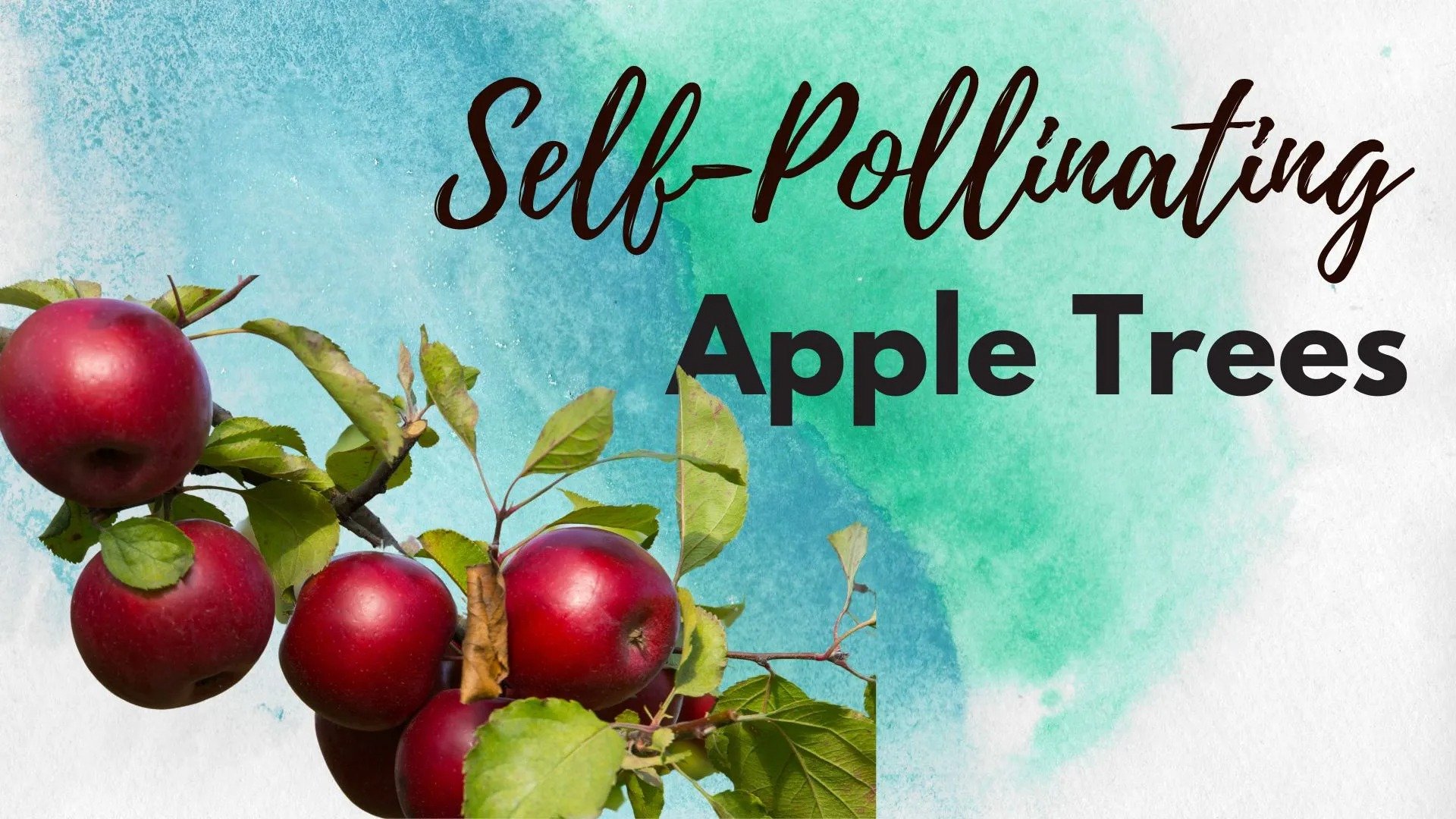Table of Contents
Do you know what the most common fruit trees are grown in gardens and orchards worldwide? They are apple trees. These come in varieties like self-and cross-pollinating.
Self-pollinating apple tree varieties do not require a second tree for pollination. These trees don’t require the planting of another tree close since they can produce fruit without the necessity for cross-pollination. It is a massive benefit for people with limited space who wish to cultivate fruit trees in their gardens or backyard.
The various varieties of self-pollinating apple trees and how to grow them will be covered in this article. By this post’s end, you will know more about apple trees, and you will be able to make a decision whether you want self-pollinating apple trees in your garden or not!
Let’s discuss the several types of self-pollinating apple trees-
Types Of Self-Pollinating Apple Trees
Apple trees that can pollinate themselves and bear fruit without the assistance of another apple tree are referred to as self-pollinating or self-fertile trees. These trees may produce fruit without the aid of bees or other pollinators because they have both male and female reproductive organs. For gardeners and orchard owners who wish to grow apples without worrying about cross-pollination, self-pollinating apple trees are a fantastic alternative.
1. Granny Smith
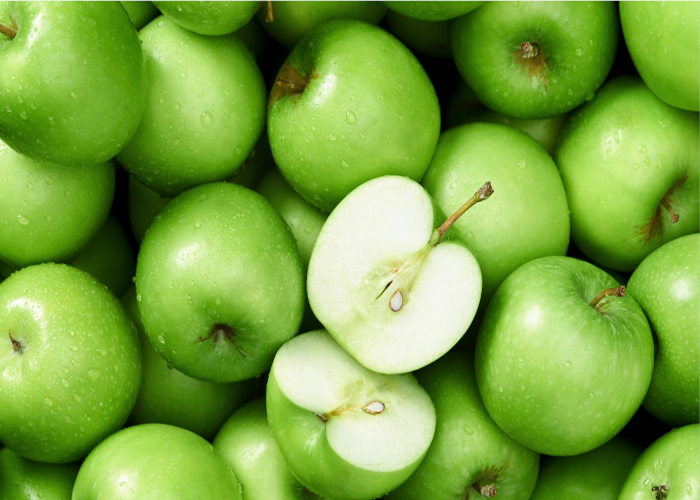
The Granny Smith apple is a favourite for many different recipes. The fruit has a distinctive green exterior and a tart flavour, and the tree favours warm regions. Granny Smith apples are good pollinators for various apple kinds and respond well to excessive output and pruning. This tree is simple to grow, but if left to overproduce, it may begin to give fruit every two years. It is unusual for the fruit to grow inside the foliage.
2. Golden Delicious
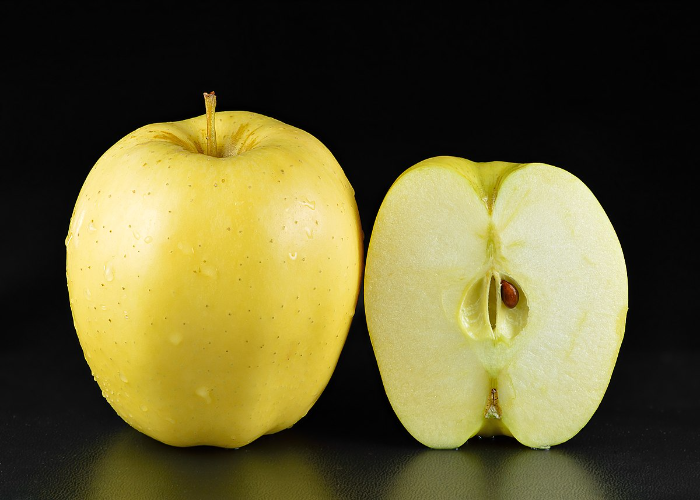
Golden Delicious apples are part-pollinators and have a long refrigerator shelf life if picked early. Because they flower for a more extended period and produce more significant amounts of pollen than other varieties, they are also simple to grow, highly productive in different climates, and effective pollinators for different apple trees.
3. Gala
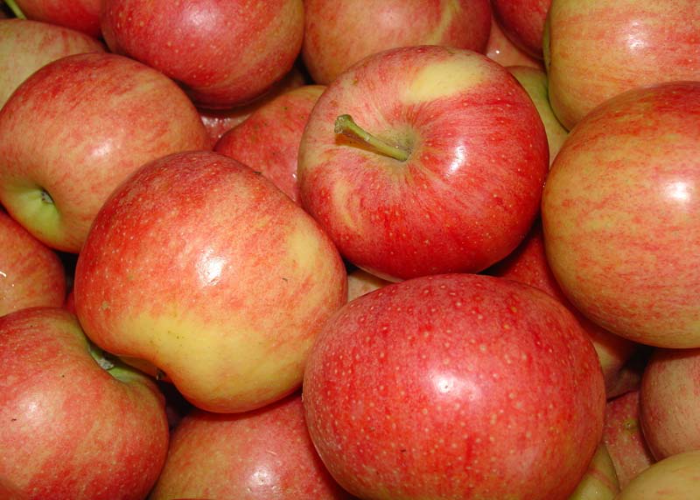
Gala apples thrive in cool climates and are widely farmed in South Africa, France, New Zealand, and Chile. This mostly self-fertile tree thrives in arid climates but is prone to various illnesses. Although they can self-pollinate, they will produce better yields if a compatible cross-pollinator is nearby.
4. Queen Cox
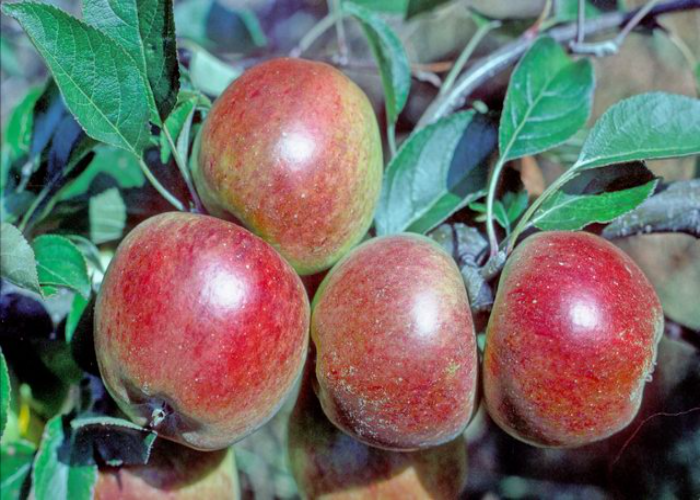
This apple type is a popular choice for backyard orchards because it is self-fertile. Even though it is a good self-pollinator, it needs to offer additional pollination processes to be very useful as a cross-pollinator among different apple varieties. It also offers only medium disease resistance and grows best in chilly climates.
5. Jonathan
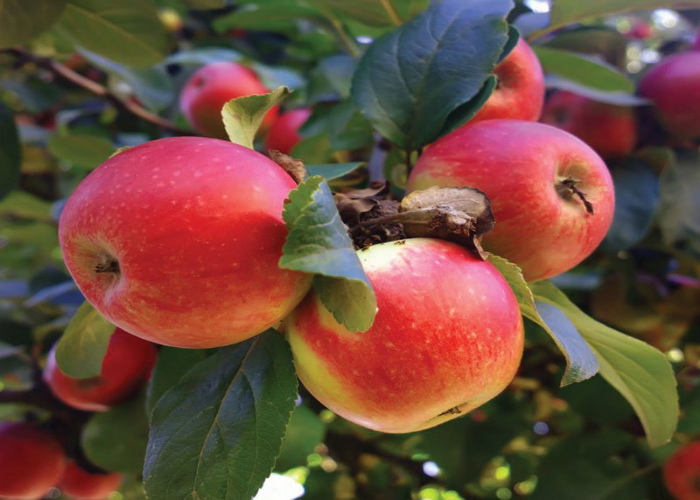
The Jonathan apple is one of the most incredible-tasting apples in the US. Although Jonathan apple varieties are fully self-fertile, it’s important to note that they produce their best fruit when pollinating a close-by, compatible apple tree. However, some backyard orchard landlords hesitate due to the low disease resistance.
6. Grimes Golden
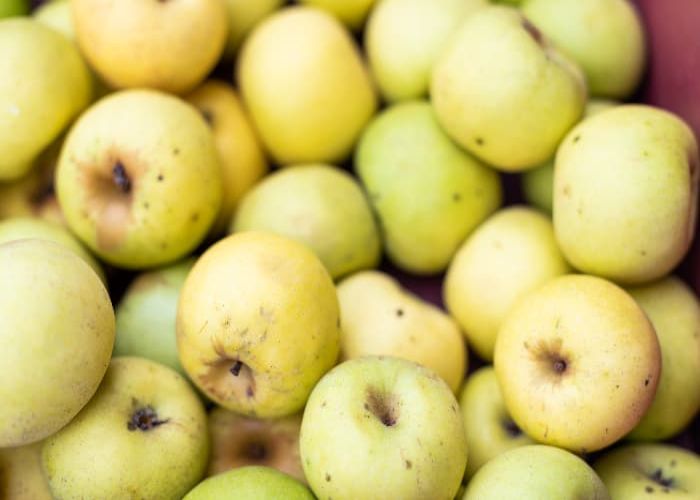
Some claim that the Golden Delicious apple comes from the Grimes Golden apple. These trees favour warmer environments, although fruit production is not guaranteed. The tree is extremely self-fertile by themselves and serves as a pollinator for numerous other apple tree varieties. It also requires thinning in the spring.
7. Yellow Transparent
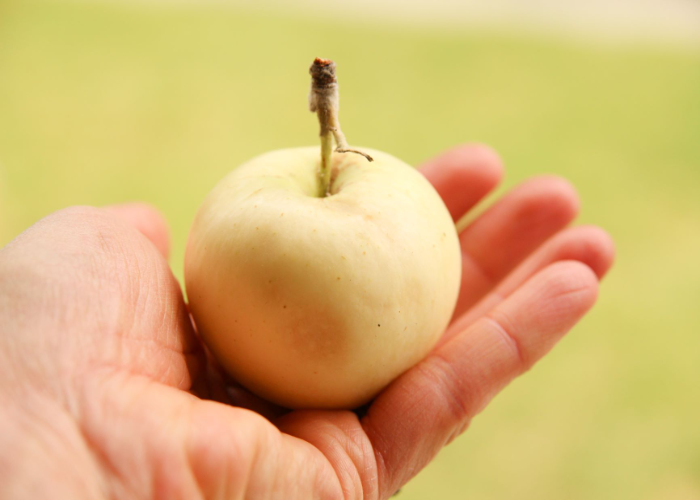
It is a very cold-hardy, partially self-fertile tree that ripens early in the season. The tree can, however, develop a biennial bearing pattern and has a natural inclination to overcrop. Additionally, even though it is a disease-resistant tree, this particular variety is known to succumb to fireblight, so it is best to avoid planting it where it is a problem.
8. Empire

The Empire apple is a well-known McIntosh apple cross popularly known for producing a lot of fruit. It often produces abundant crops of little apples. After they blossom, thin the fruiters to ensure larger fruit. Empire apple trees just need to be checked for scabs. Empire apples should grow in warm regions with chilly nights.
9. James Grieve
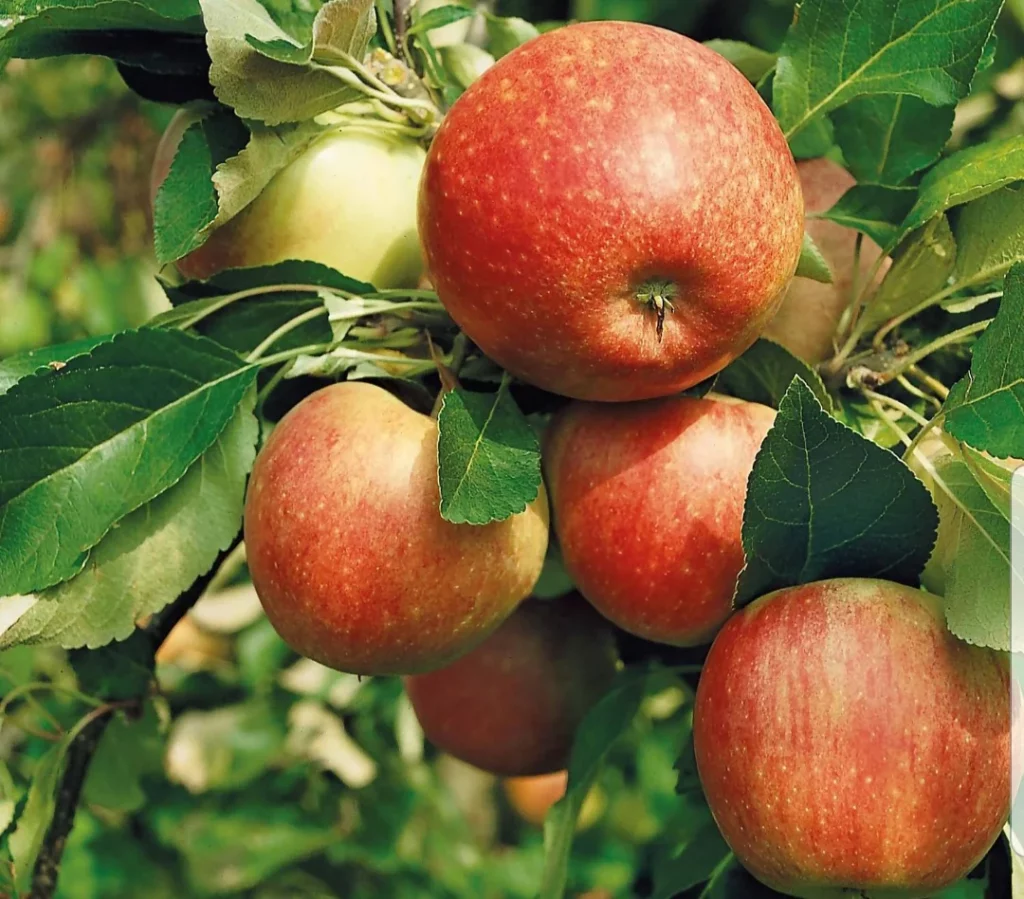
James Grieve is the name of an ancient cultivar that is Scottish in origin and was developed by James Grieve. This dual-purpose cultivar’s delicate, firm flesh has a sweet flavour that goes well with cheese recipes. This apple type bears a good crop when fruiting and is easily pollinated and partially self-fertile. However, it will lose its fruit early if grown in an environment that is too warm.
10. Alkmene
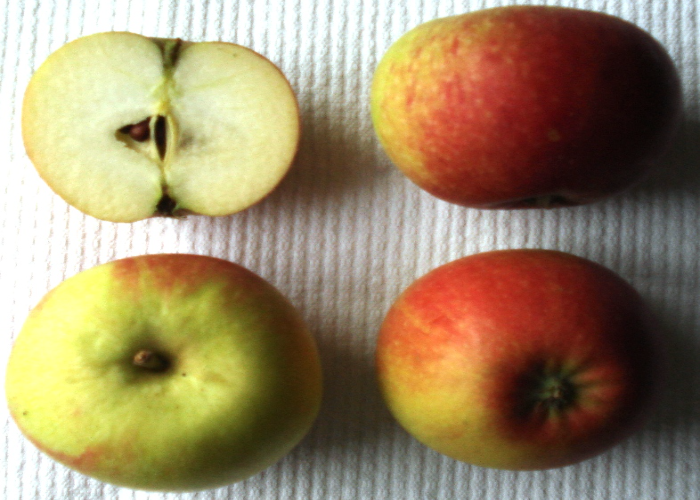
The Alkmene apple also goes by the names Early Windsor and Red Windsor. It is a well-liked German cultivar renowned for its rich, exquisitely aromatic flavour. It’s probably preferable to cultivate one in your backyard for your own use since it isn’t frequently grown commercially. Its flesh is dense, crisp, and juicy, and because it is self-fertile and doesn’t need pollination, it yields a consistent supply.
11. Anna

This Golden Delicious-like cultivar thrives remarkably well in regions where temperatures don’t drop below freezing. This early-season cultivar, which is grown in Israel, tastes best when harvested fresh or eaten off the tree. The Anna cultivar often depends on cross-pollination to generate a large harvest because it is only partially self-sterile. If grown appropriately, ana apple trees can bear fruit twice a year.
12. Dolgo
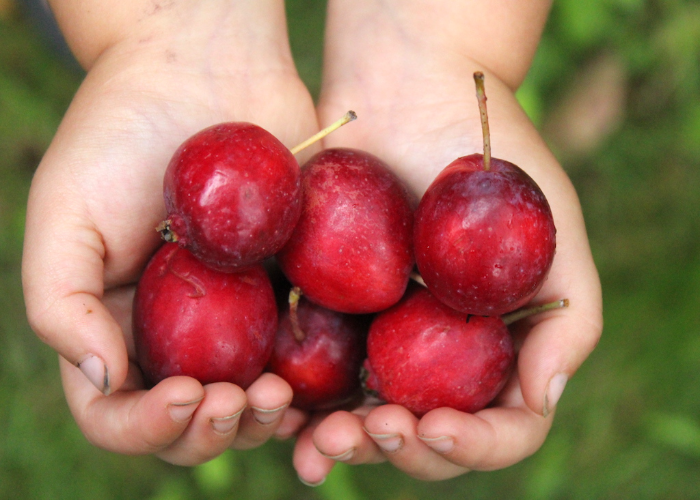
The Dolgo apple tree, a kind of crabapple, is self-fertile. Hence, no pollination is required to produce a crop from this apple. It is frequently positioned close by as a pollinator for different apple trees because it is an early-blooming type. This variety, which has Siberian roots, produces crimson-red fruits that mature with high pectin content and are known for creating excellent jams.
13. Russet Egremont
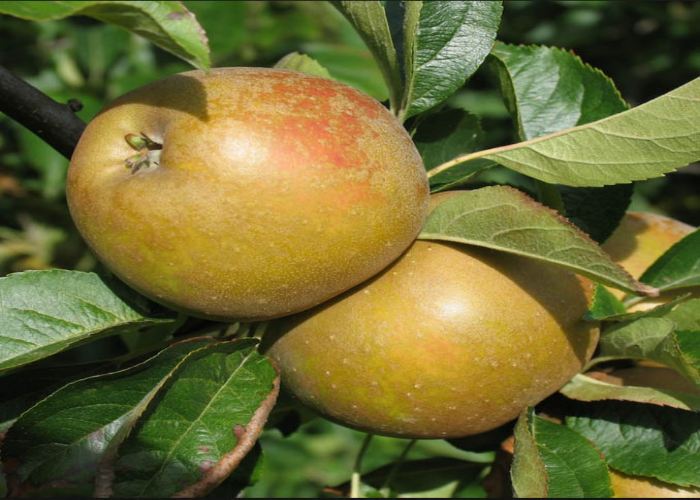
This Victorian-era cultivar features solid flesh and tough, dull skin. It has a nutty flavour. It is a hardy and disease-resistant tree that yields medium-sized apples and thrives in colder, wetter conditions. Although this partially self-fertile foliage does not require a companion pollinator, nearby plantings of compatible varieties improve crop yields.
14. Hewe’s Virginia Crab
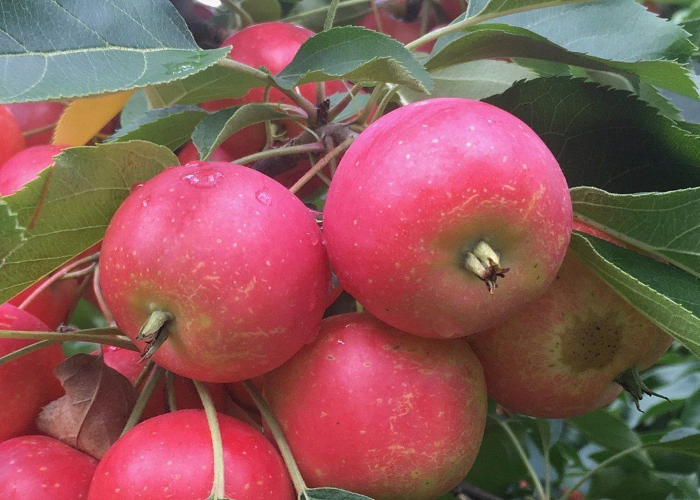
This tiny treat originates in the Roman era and is among the oldest. It is frequently planted for crabapple jellies and as a cider apple. The Hewe’s variety is self-fertile and doesn’t need a partner tree for pollination, but it will yield more fruit if another variety is grown close by. This type is a vigorous-growing, incredibly cold-hardy tree with bright yellow fruit that blushes crimson when ripe.
15. Laxton’s Superb
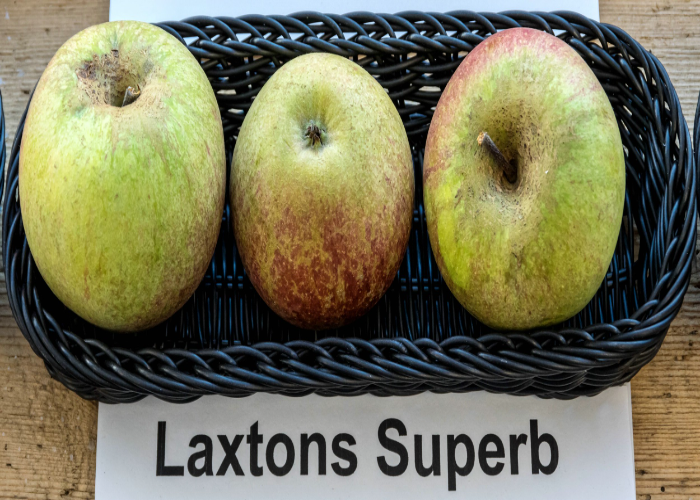
This variety is for you if you seek a high-yield, low-effort cultivar. This cultivar produces large apple crops, but upkeep is required when the tree overproduces fruit to prevent crop years from being lost. It is somewhat disease resistant, a late bloomer, and largely self-fertile. Scab, a fungal illness spread by spores and water droplets, is a risk. Laxton’s Superb is a dessert apple with beautifully crisp, sweet-tasting white flesh.
16. Edmund’s Russet
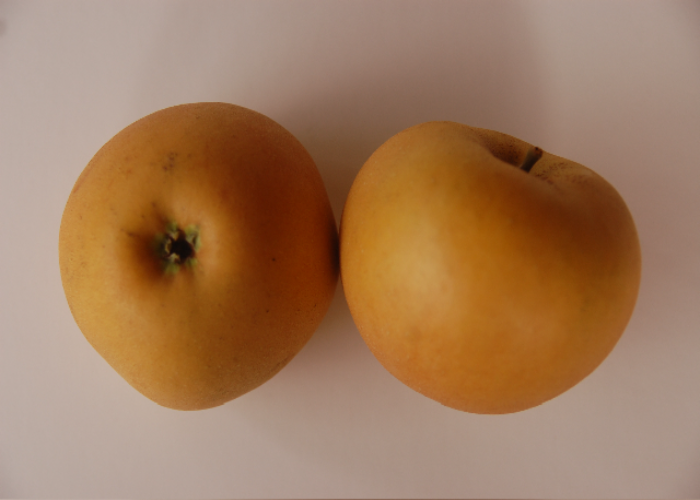
Among the finest English russet apple kinds is the St. Edmund’s Russet, a largely self-fertile cultivar. It is best to eat fruit of this type soon after harvesting because it does not store well. It is a dessert apple that produces a tiny but very flavorful fruit and is suitable for vinegar and apple juice production in cooler, higher-rainfall regions.
17. Adam’s Crabapple
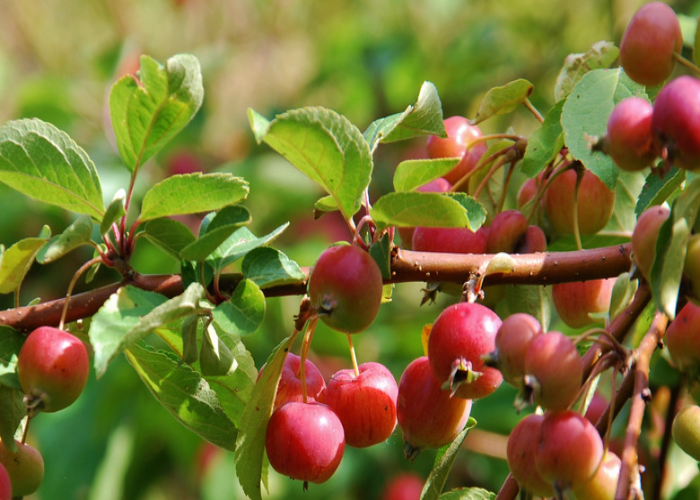
It is partially self-fertile and a robust little deciduous tree. It is a great tree to utilise as a breeder for other apple tree species because of its profusion of blossoms and vivid red fruit. This tree should be cultivated in full sun, well-draining soil with low acidity, and is disease- and cold-resistant. In the winter, it attracts a lot of birds and tiny creatures as a source of nourishment because its fruit does not drop quickly.
How to Cultivate Apple Trees that Self-Pollinate?
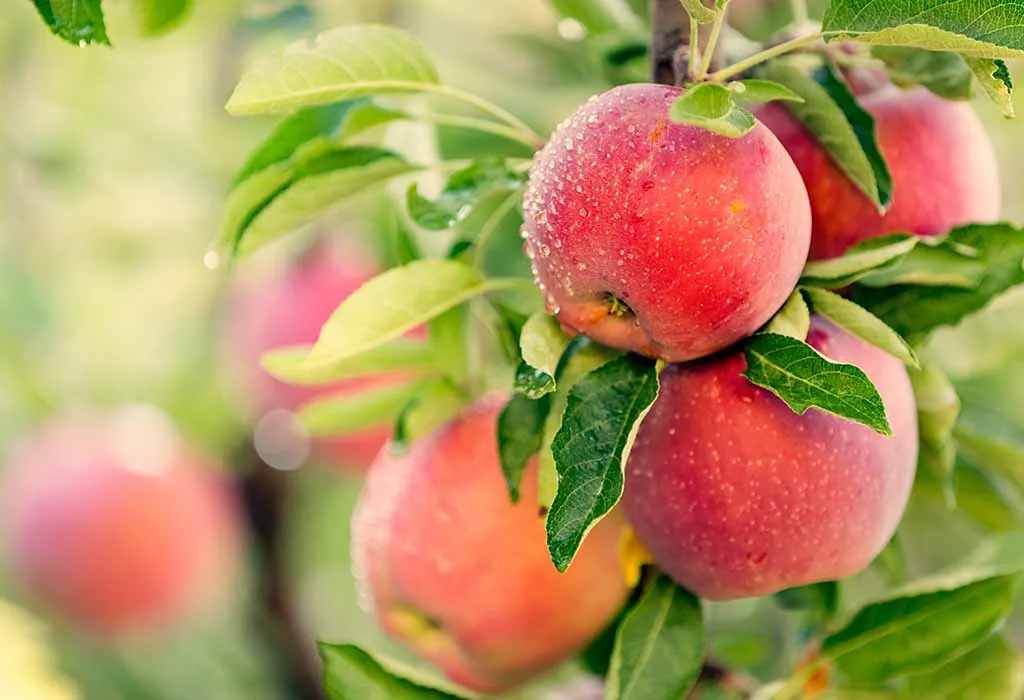
Cultivating apple trees that self-pollinate is akin to cultivating other fruit trees, but there are some essential distinctions to bear in mind. In this segment, we will examine the measures to grow self-pollinating apple trees fruitfully.
1. Essential Equipment
Before we initiate, collecting all the necessary equipment for cultivating apple trees that self-pollinate is crucial. These include:
Apple Tree Seedling: This is the juvenile apple tree you will plant in your preferred location. Ensure that you choose a self-pollinating strain of apple tree that is apt for your climate and soil circumstances.
Spade or Shovel: You will need a spade or shovel to excavate the hole for the apple tree seedling. Guarantee that the spade or shovel is of exceptional quality and effortless.
Compost or Fertiliser: To prepare the hole for the apple tree sapling, you will need organic matter or plant food to blend with the soil. It will give the apple tree the necessary nutrients to develop and bear fruit.
Watering Container: Consistent watering is necessary for apple trees, particularly during the first year of growth. You’ll need a watering can or pipe to maintain the soil’s moisture level and water the tree frequently.
Scissors for trimming: Pruning is crucial in growing self-pollinating apple trees. You will need trimming scissors to remove broken or dead branches and shape the tree for healthy growth.
Pesticide and Antifungal Agent:Watching for pest or disease indicators on apple trees is essential because they can be vulnerable to fungal and insect infestations. You could need insecticides and antifungal medications to stop bugs and protect the tree. Select certain products for fruit trees and pay close attention to the directions.
2. Instructions For Cultivating Self-Pollinating Apple Trees
Pick A Spot
The initial stage in cultivating self-pollinating apple trees is to select a suitable spot. Apple trees demand soil that drains well and is full of sunshine, so pick a spot with no less than six hours of direct sunshine daily. It is equally important to avoid planting apple trees in regions prone to frost or powerful winds.
Prep The Soil
After selecting a spot, it’s time to prep the soil. Dig a hole twice as wide as the root ball of the apple tree sapling and deep enough so that the top of the root ball is level with the ground. Mix compost or fertiliser with the soil to ensure the apple tree has enough nutrients to grow.
Plant The Apple Tree
Position the young apple tree seedling into the dug hole and pack the earth firmly around it, compressing the soil to remove any pockets of air. Hydrate the seedling generously and place a layer of compost or bark around the tree’s foundation to conserve moisture.
Water The Tree
Apple trees necessitate regular watering, primarily throughout their first year of development. Water the tree consistently, being careful not to saturate the soil. Depending on the weather and soil type, you may need to hydrate the tree every seven days or twice a week.
Prune The Tree
Trimming the tree is a crucial aspect of cultivating self pollinating apple trees. Trim the tree during late winter or early spring before the buds sprout. Extract any dead or damaged branches, as well as any branches that are crossing or rubbing against each other. It will help to enhance air circulation and encourage robust growth.
Administer Pesticides (If Required)
Apple trees are vulnerable to infestations from insects and fungi. Thus, keeping a close eye on the tree for any signs of pests or disease is crucial. Use pesticides as necessary to thwart infestations and safeguard the tree.
Cultivating self-pollinating apple trees can be a satisfying experience, particularly for those with limited area or those who want to produce fruit without relying on cross-pollination. By adhering to these uncomplicated guidelines and utilising the appropriate equipment, you can cultivate self-fertile apple trees successfully and relish delectable, locally-grown fruit for many years.
Final Thoughts!
To sum up, incorporating self-pollinating apple trees into your garden is a fantastic choice. Not only do they offer delectable fruit, but they also enhance the aesthetic appeal of your outdoor space. You can now select the appropriate self-fertilizing apple tree from the list of 17 based on your preferences and requirements.
While planting self-fertilizing apple trees, it is critical to pick the appropriate spot and prepare the soil adequately. Letting the trees have ample room to develop and thrive is crucial. Regular trimming and maintenance are required to guarantee that your trees remain healthy and provide the best fruit possible.
In general, apple trees that self-pollinate are a wise investment for any gardener. The advantages outweigh the work required to cultivate and maintain them. Imagine harvesting fresh apples from your garden and savouring them with your loved ones. You can transform this vision into a reality with patience and attention. So choose your preferred self-fertilizing apple tree, and commence your apple orchard today!

